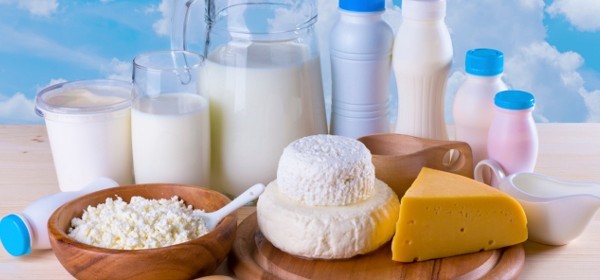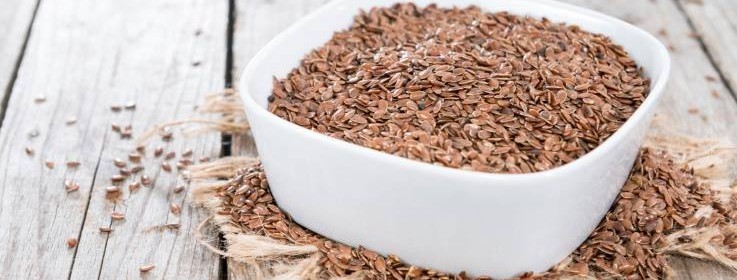Think salads are healthy—but boring? Well, think again. These 20 healthy salad recipes are so tasty, they’ll have you coming back for more.
Cucumber, Radish and Melon Salad
A wonderful combination of fruit, vegetables and crunchy almonds mixed with a honey and walnut oil dressing, this salad recipe makes an ideal accompaniment to cold or smoked meats and poultry.
Bulgur Wheat and Shrimp Salad
A coarsely ground wheat grain, bulgur has already been parboiled, so it’s quick to prepare and makes an ideal pantry standby to use in salads, as well as in hot dishes. This nutty-textured, colorful salad is full of goodness, and is very attractive to the eye.
Fruity Pasta Salad
Pineapple and pear give this healthy salad recipe a sweet accent, while balsamic vinegar adds a delightful piquancy. With lean ham, cheese, fruit and vegetables all adding their own nutrients to balance the pasta, the result is a marvellous dish.
Rustic Broiled Vegetable and Rigatoni Salad
Broiled vegetables are delicious with chunky pasta in a tangy dressing. Serve this healthy salad as a light lunch or as an accompaniment to broiled poultry or meat, when it will serve 6 or 8 people.
New Potato Salad
A potato salad with a creamy dressing is always a winner, and the version here, with cucumber, green onions and fresh herbs, is sure to become a firm favourite. Potatoes are full of goodness, particularly if the skins are left on.
Garlicky Tomato Salad (pictured)
When tomatoes are at their peak of sweetness, this healthy recipe is particularly delicious. It’s eye-catching, too, if you make the salad with a mixture of different-coloured tomatoes—new varieties are coming on the market all the time.
Apple and Sprout Salad
The dressing for this vibrant salad, with tons of ginger, complements the flavours of the sprouts, apple and vegetables.
Crunchy Nut Coleslaw
This fresh-tasting coleslaw is made with white cabbage, carrot and radishes, flecked with green onions, sultanas and peanuts.
Tarragon Chicken with Baby Spinach
Tahini, a paste made from sesame seeds, is a favourite ingredient in Middle Eastern cooking. Available at most large grocery stores, it adds a nutty taste and thick creaminess to the dressing for this healthy chicken salad.
Creamy Turkey Salad with Grapes and Pecans
With its wonderfully contrasting tastes and textures, this salad makes a satisfying main course that is luxurious without containing a lot of saturated fat. It is the perfect recipe for roast turkey leftovers.
Warm Sesame Chicken Salad
Strips of chicken in a crisp coating of sesame seeds, breadcrumbs and cornflakes are served on a crunchy vegetable salad dressed with a fresh herb vinaigrette. A little chili powder in the coating gives the recipe a bit of a kick.
Mango Chicken Salad
This healthy salad recipe combines new potatoes, tender broiled chicken and asparagus, tossed in a fresh orange dressing and then gently mixed with juicy mango slices and baby salad greens. It makes a delicious and well-balanced meal all on its own.
Asian Chicken Salad
This chicken salad has an Asian twist. Fried chicken is tossed with oranges, green onions, snow peas and lychees and is then crowned with a drizzle of creamy peanut dressing. What a treat for your heart and your taste buds!
Filet Mignon Salad
How can steak be part of a healthy diet? Very easily! Broil or barbecue the finest and one of the leanest of steaks, filet mignon, and arrange it on top of fresh salad greens and plenty of vegetables to make a “composed” salad.
Shrimp, Melon and Mango Salad
This salad recipe combines shrimp with colourful, juicy fruit tossed in a light dressing flavoured with fresh mint and honey.
Lobster Salad
A lobster makes a luxurious salad for two people. The lobster meat is here served on a bed of peppery salad greens, shredded snow peas, grapes and new potatoes cooked in their skins, all tossed in a lime-spiked dressing.
Smoked Trout and Pasta Salad
Tempt your family with this delicious heart-healthy pasta salad recipe. It makes an ideal midweek meal served with crusty whole-wheat bread. If you wait until the last minute to add the arugula, it won’t spoil if anyone’s late home.
French Tuna and Bell Pepper Salad
This colourful healthy salad is full of varied flavours and textures. Chunks of tuna, wedges of potato, crisp beans and tangy tomatoes make for a quick and easy summery meal. Serve with crusty whole-wheat baguettes.
Tropical Salmon Salad
Conjure up the colours and flavours of a tropical island with this unusual warm salad. The rich flavour of salmon is perfectly balanced by the gentle acidity of orange and the sweetness of mango and papaya.
Asian-Style Chicken and Pasta Salad
Pasta bows taste deliciously different when combined with an exotic dressing of fish sauce, fresh red chili and rice vinegar in a moist chicken salad. Fresh crunchy vegetables complete this well-balanced main-course dish.
Article Credits: http://www.besthealthmag.ca/










